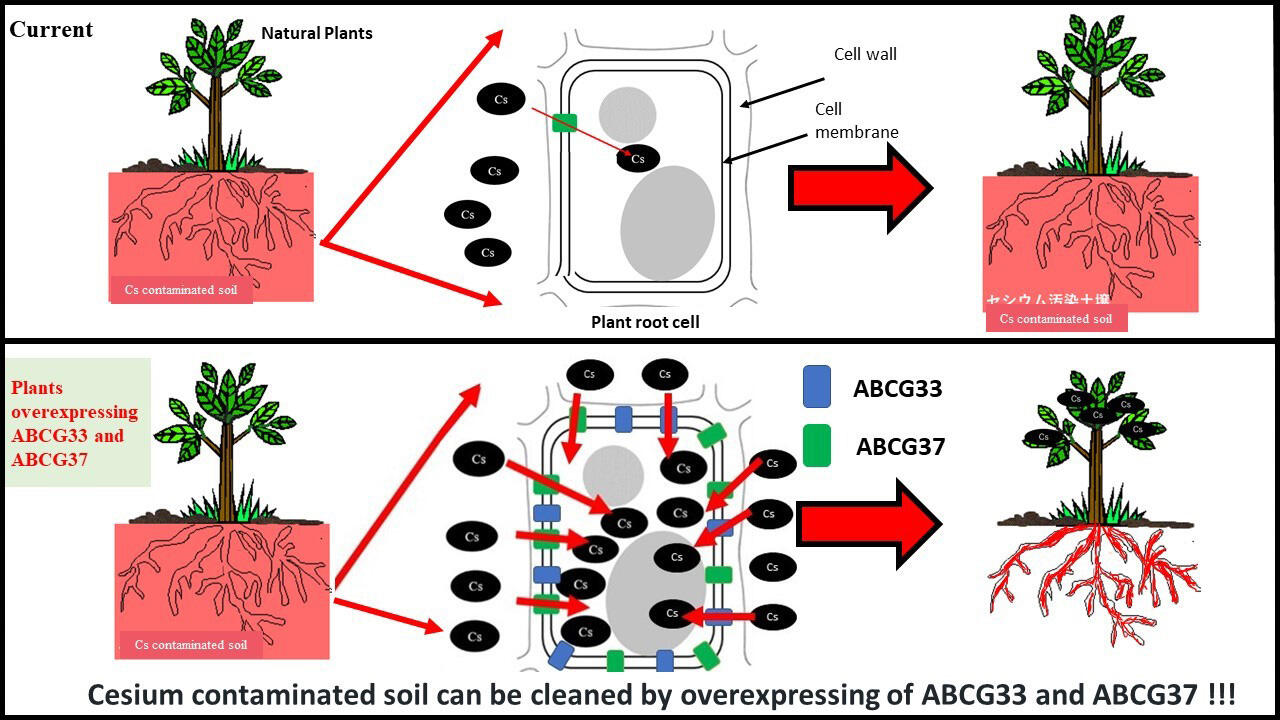A group led by Associate Professor Abidur Rahman of the Agri-Innovation Center, Faculty of Agriculture, Iwate University, Assistant Professor Takashi Akihiro of the Faculty of Life and Environmental Science, Shimane University, and Professor Keitaro Tanoi of the Graduate School of Agricultural Life Sciences, the University of Tokyo, for the first time in the world, discovered the potassium-independent cesium transporter and has shown the feasibility of cleaning up the contaminated soil using phytoremediation technique. The findings were published in the journal Molecular Plant (DOI 10.1016/j.molp.2021.02.002).

When a nuclear disaster or similar incidents occur, radioactive cesium is dispersed and accumulates in soil, causing severe contamination. Soil is also polluted with other toxic metals such as cadmium, arsenic, mercury etc. Phytoremediation has gained attention in recent years as a way of cleaning up soil contaminants by using plants absorbing them. Previous findings indicate that cesium uses potassium transporters to be absorbed in the plant. Since potassium is an essential element, it is impractical to use potassium transporter overexpressors to absorb sufficient cesium from soil, as the soil will be depleted of potassium, resulting in an environment where no plants will be able to grow.
In quest of search for new potassium-independent cesium transporters, the research group focused on ABC protein family, which has been shown to transport various toxic metals such as cadmium, arsenic, lead, and mercury in earlier studies. Firstly, using Arabidopsis thaliana mutants lacking various types of ABC proteins, screening was carried out with cesium at a concentration of 1.5 mM to find mutants that can survive under the high concentration of cesium. From the screen, the abcg33abcg37 double-deficient mutant was found to show resistance to cesium, indicating that ABCG33 and ABCG37 are potential cesium transporter proteins which act redundantly.
The group next assessed the uptake of cesium using radioactive cesium (137Cs). Compared with the wild-type control plants, the double mutant accumulates much less cesium in their root in the presence or absence of potassium, indicating that ABCG33 and ABCG37 are required for cesium transport and loss of these proteins results in less cesium transport. The next question to address is whether these proteins transport potassium. To address this, the plants' growth response in the presence or absence of potassium was assessed. The double mutant growth response did not differ from the wild-type control plants. In addition, the content of potassium was exactly same in wild-type and mutant plant, confirming that ABCG33 and ABCG37 do not transport potassium.
In order to establish that these two proteins do indeed transport cesium independent of potassium, ABCG33 and ABCG37 were expressed in yeast (Saccharomyces cerevisiae) and radioactive cesium absorption experiment was conducted. The test confirmed that ABCG33 and ABCG37-expressing yeast absorbed significantly more radioactive cesium than wild-type yeast Furthermore, ABCG33 and ABCG37 and Arabidopsis thaliana high-affinity potassium transporter (AtAKT1) were expressed in potassium transporter (TRK1, TRK2) -deficient mutants to perform the yeast growth assay. Yeasts expressing ABCG33 and ABCG37 could not grow in the absence of potassium, while yeasts expressing high-affinity potassium transporters could grow. These findings confirm that ABCG33 and ABCG37 are truly potassium-independent cesium transporters.
This research has revealed a new mechanism for the uptake of cesium by plants from soil. If ABCG33 and ABCG37 and their homologue genes can be overexpressed in plants, these plants can be effectively used for phytoremediation of radioactive cesium. The research group hopes to continue applied research with the aim of establishing new forms of phytoremediation, with a focus on elimination of toxic metals, including cesium.
This article has been translated by JST with permission from The Science News Ltd.(https://sci-news.co.jp/). Unauthorized reproduction of the article and photographs is prohibited.




